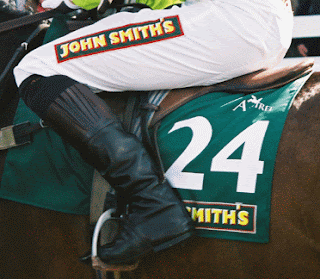Which sculptor's work do you prefer?
PS Heather makes the hooves out of copper immersion tanks.



Here's one of Deborah's sculptures:





 As noted previously on this blog, our friend Laura Florence has left her former post as resident farrier at the University of Pennsylvania's New Bolton Center after seven years of meeting the challenges of referral hoof cases there. Although Laura remains loosely associated with the University in her role as a Special Research Fellow of the Dorothy Russell Havermeyer Foundation for the study of the hoof, she is now moving on to private practice.
As noted previously on this blog, our friend Laura Florence has left her former post as resident farrier at the University of Pennsylvania's New Bolton Center after seven years of meeting the challenges of referral hoof cases there. Although Laura remains loosely associated with the University in her role as a Special Research Fellow of the Dorothy Russell Havermeyer Foundation for the study of the hoof, she is now moving on to private practice. It's time for my annual trip to Kentucky, ostensibly for the Rolex (Kentucky) Three-Day Event at the Kentucky Horse Park, but my plans are to cram as much in as I can. ("Rolex" is America's premier four-star event.)
It's time for my annual trip to Kentucky, ostensibly for the Rolex (Kentucky) Three-Day Event at the Kentucky Horse Park, but my plans are to cram as much in as I can. ("Rolex" is America's premier four-star event.)
 |
| Michael Davis, DVM, MS, of New England Equine Medical Center. Fran Jurga photo. |
 It hasn't been an active news week, and yet Thursday broke the all-time record for visitors to this blog. I don't know who you are but thank you for coming and reading the news. Please keep checking back for more news.
It hasn't been an active news week, and yet Thursday broke the all-time record for visitors to this blog. I don't know who you are but thank you for coming and reading the news. Please keep checking back for more news.  The American Association of Equine Practitioners (AAEP) has issued this statement to its members about the potential crisis of pergolide's removal from the drug market.
The American Association of Equine Practitioners (AAEP) has issued this statement to its members about the potential crisis of pergolide's removal from the drug market.

 First Announcement!
First Announcement!

 Welsh farrier Mark Galliers DWCF is counting the days now until he will be put to the test in the ultimate racing "reality show." The Welsh farrier was chosen as one of ten jockeys out of 3500 applicants to race in the People's Race on Grand National Day at Aintree in England. The catch: all had to be amateurs. The prize: Almost $200,000 to the charity of the winning jockey's choice.
Welsh farrier Mark Galliers DWCF is counting the days now until he will be put to the test in the ultimate racing "reality show." The Welsh farrier was chosen as one of ten jockeys out of 3500 applicants to race in the People's Race on Grand National Day at Aintree in England. The catch: all had to be amateurs. The prize: Almost $200,000 to the charity of the winning jockey's choice. Mark Galliers is the Welsh farrier selected to become an overnight jockey sensation and ride on Grand National Day at Aintree this Saturday in a race that will donate almost $200,000 to the charity of his choice. If Mark wins, that money will go a children's cancer fund.
Mark Galliers is the Welsh farrier selected to become an overnight jockey sensation and ride on Grand National Day at Aintree this Saturday in a race that will donate almost $200,000 to the charity of his choice. If Mark wins, that money will go a children's cancer fund. Welsh farrier Mark Galliers is one of ten private citizens chosen from thousands of applicants to ride in The People's Race on Grand National Day (Saturday, April 14) at Liverpool, England's fabled Aintree racecourse.
Welsh farrier Mark Galliers is one of ten private citizens chosen from thousands of applicants to ride in The People's Race on Grand National Day (Saturday, April 14) at Liverpool, England's fabled Aintree racecourse. The New Zealand Equine Research Foundation is hosting Australian veterinarian and laminitis researcher Dr. Chris Pollitt and farrier Richard Hansen for a three-stop tour of laminitis education in May. The stops are at racecourses in Hamilton on May 20, Palmerston North on May 23, and Christchurch on May 27.
The New Zealand Equine Research Foundation is hosting Australian veterinarian and laminitis researcher Dr. Chris Pollitt and farrier Richard Hansen for a three-stop tour of laminitis education in May. The stops are at racecourses in Hamilton on May 20, Palmerston North on May 23, and Christchurch on May 27.